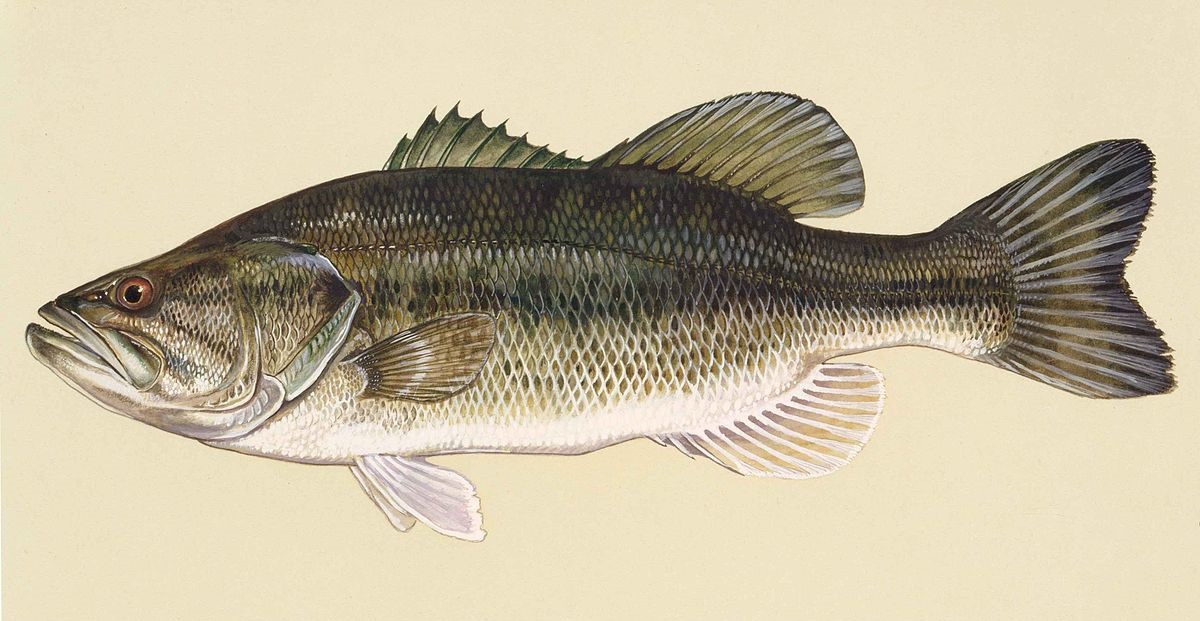Largemouth Bass

Largemouth Bass
(Micropterus salmoides)
Tags: Aquatic
Identification and Reproduction
Identification:
- The largemouth bass is a carnivorous freshwater fish.
- This fish is olive-green to green-grey, marked with a series of dark and even black blotches that form a horizontal stripe across the body.
- As noted by its name, this fish is the largest out of all the black basses, it can reach a length of 40 cm.
- Two dorsal fins are fused together.
- Has a long, wide lower jaw that is slightly longer than the upper jaw.
Reproduction:
- Populations increase rapidly, as females lay up to 45,000 of eggs at a time and can spawn multiple times in a season. The number of eggs laid is impacted by her size.
- Spawning occurs in late winter between January and February in the southern parts of US but will occur between May and June in northern regions.
- These fish can reach sexual maturity as early as 3 months.
Habitat & Ecology
- The largemouth bass lives in all water types, swamps, ponds, lakes, reservoirs, creeks and even large rivers.
- Young largemouth bass primarily feed on small bait fish, scuds, small shrimp and insects.
- Adult largemouth bass will feed on smaller fish, shad, snails, crawfish, amphibians, bats and even small water birds.
- Prefers warm, shallow waters and are often found near stumps and aquatic vegetation, especially waterlillies, cattails, and other pondweeds.
- These fish will grow much more slowly in weedy and vegetated waters, as this makes catching prey more difficult.
Impacts
- In waters with little to no vegetation cover, largemouth bass can devastate the prey population.
- As an introduced species it can permanately alter the native food web by eliminating native species.
- Have been known to cause local extinction of native fish and amphibian species.
- This fish is also capable of carrying hundreds of parasites that can spread to native species.
Management
- Report this species if you think you have seen it; take photos, note exact location, date and any identifying features.
- Always clean, drain and dry your boat and water equipment before leaving a waterbody.
Resources
Download BC's Invasive Species Alert for Largemouth Bass here.
For more information please refer to the Animal Diversity Web datapage on Micropterus salmoides: American black bass here.
For more details check out the Invasive Species Compendium datasheet on Micropterus salmoides (largemouth bass).
Header photo (Yinan Chen).



